There is a wide array of camp cooking choices that exists between simple dehydrated meals and completely from scratch gourmet cooking. Somewhere in the delicious middle are meals made with savvy, plant forward camping meal helpers, that reduce cooking times, add flavour, and increase variety.
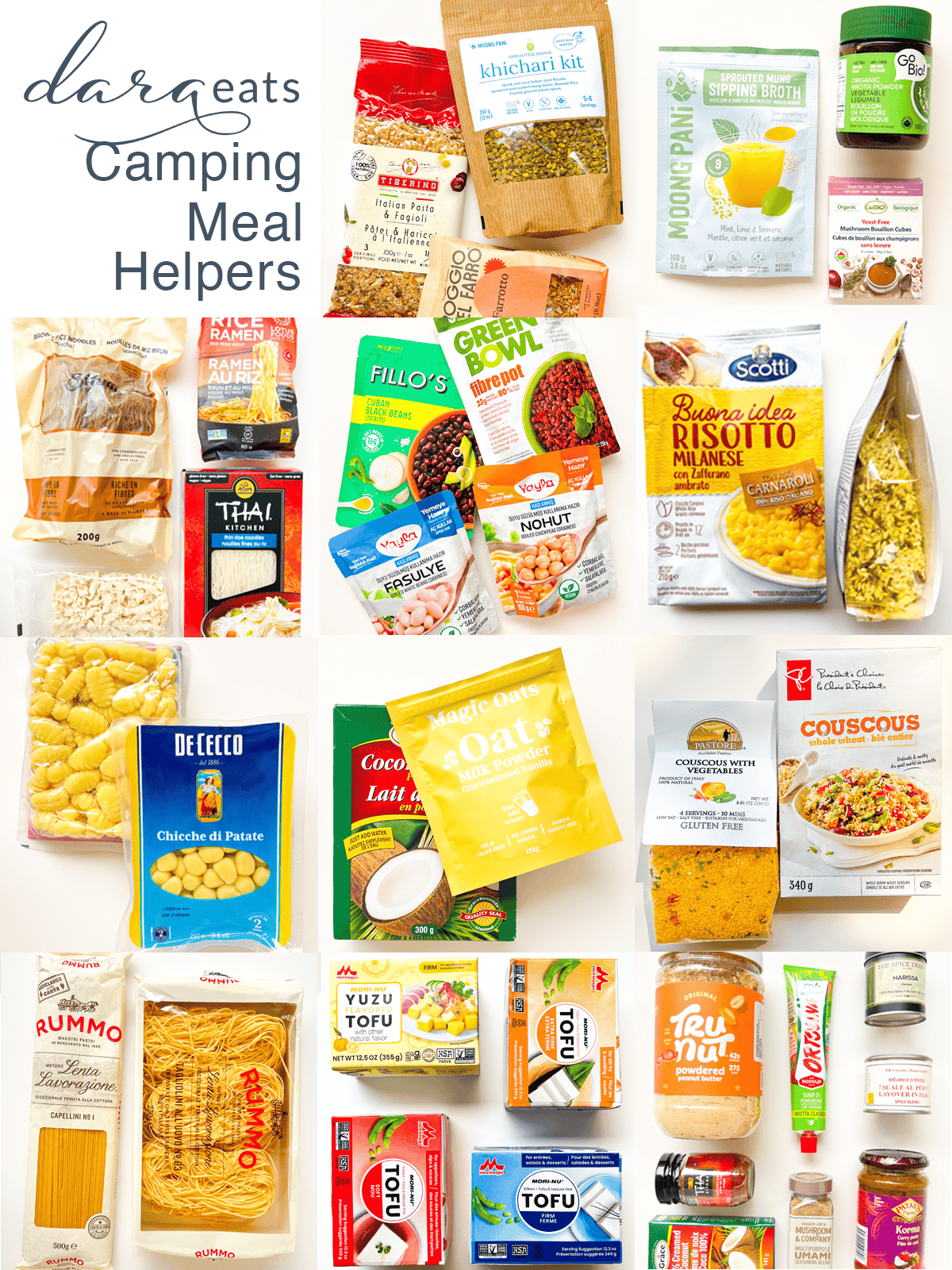
Cooking outdoors is one the main reasons I love camping, apart from the actual camping experience itself of course! I appreciate the slower and methodical nature of camp cooking, from the planning and preparation beforehand, to the actual cooking and even the clean up at a camping or hiking site.
For me, the slowing down of the cooking process is akin to a kind of mindfulness, as each part of the process requires and generates a more methodical awareness of what I am doing than the usual routine during busy mealtimes at home. I find the slowing down of the cooking process to be eminently enjoyable. This pleasure is only increased by the sounds of birds and breezes, the aroma of campfires, the sizzle of camp stoves, and the companionship of loved ones. Camp cooking is definitely my happy place.
Jump to:
Why are camping meal helpers useful?
As there are different kinds of camping, there are different approaches to camp cooking, from pouches of instant food that require only boiling water, no-frills basic camp meals that can be made quickly and easily, meals partially prepared or completely cooked beforehand at home with additions made at camp, and deluxe meals cooked entirely from scratch.
I do find the prospect of cooking involved and special meals from scratch at campsites very enticing and often, that is what I plan and do. However, there are some meals that I don’t want to cook entirely from scratch. On days where camp needs to be set up or struck down quickly, after long hikes or days on the water, during short camping trips where things need to be less of a fuss, or if I just want to make a quick and tasty meal and then return to a hammock with a book, camping meal helpers are useful when making a delicious meal with less work. Really, camping meal helpers can be of use no matter what kind of camp cooking you do!
What are camping meal helpers?
Camping meal helpers are types of ingredients that can help to reduce cooking times, add flavour, and increase variety in camp cooking routines. Some items are packed in such a way that they can be included immediately into your food supplies, such as vacu-packed beans or quick cooking dried noodles, and others might have to be decanted into smaller containers, such as in the case of spice pastes or bulk milk powders.
Many of these camping meal helpers are entirely plant based or plant forward, and just because many are packaged, doesn’t mean they have to be junky or made with suspicious ingredients. Many items I have found, used, and come to love have short ingredient lists made with natural ingredients, may be organic, and are products I just as easily use at home as I do at a campsite. In fact, all the items in the accompanying photos are from my own pantry!
These are just a few of the ideas I have for camping meal helpers; I hope you find these suggestions as helpful as they have been to me!
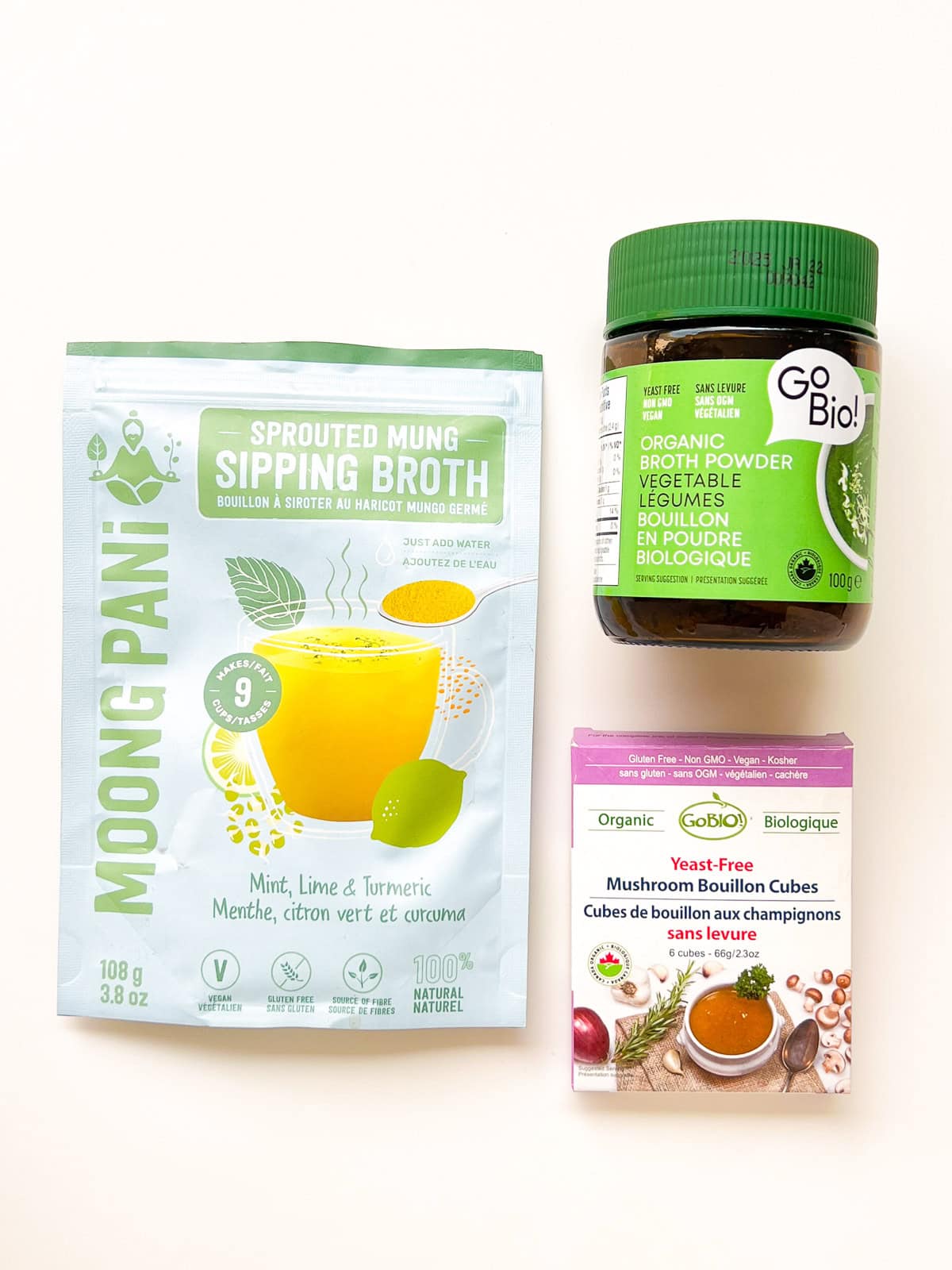
Broth and bouillon concentrates
Broth and bouillon concentrates are a compact and easy way to add flavour to anything you are cooking in a camp kitchen. There are many varieties and flavours of broth and bouillon concentrates available, including dry broth powders, bouillon cubes, sipping broth powders, and single serve liquid concentrates.
I like to add broth and bouillon concentrates to rice, noodles, soups, curries, beans, and steamed or stir fried vegetables. There are some lovely sipping broths, available in both dried and single serve liquid concentrate packs, that make a warming drink on colder days and nights. These broths are great for a midhike snack, and can also be used as a base to add extra rice or noodles to make a more substantial repast.
A note of caution: unless labeled salt free, broth and bouillon concentrates can be very salty, so add salt only after the dish has first been tasted for seasoning.
Ways to use broth and bouillon concentrates
- Add to the water used to cook plain rice, noodles, or couscous
- Use when cooking vegetables, stews, curries, and chilies to enhance flavour
- Add to boiling water to drink as a warming sip, or use as a base for rice or noodle soup, with added vegetables and tofu
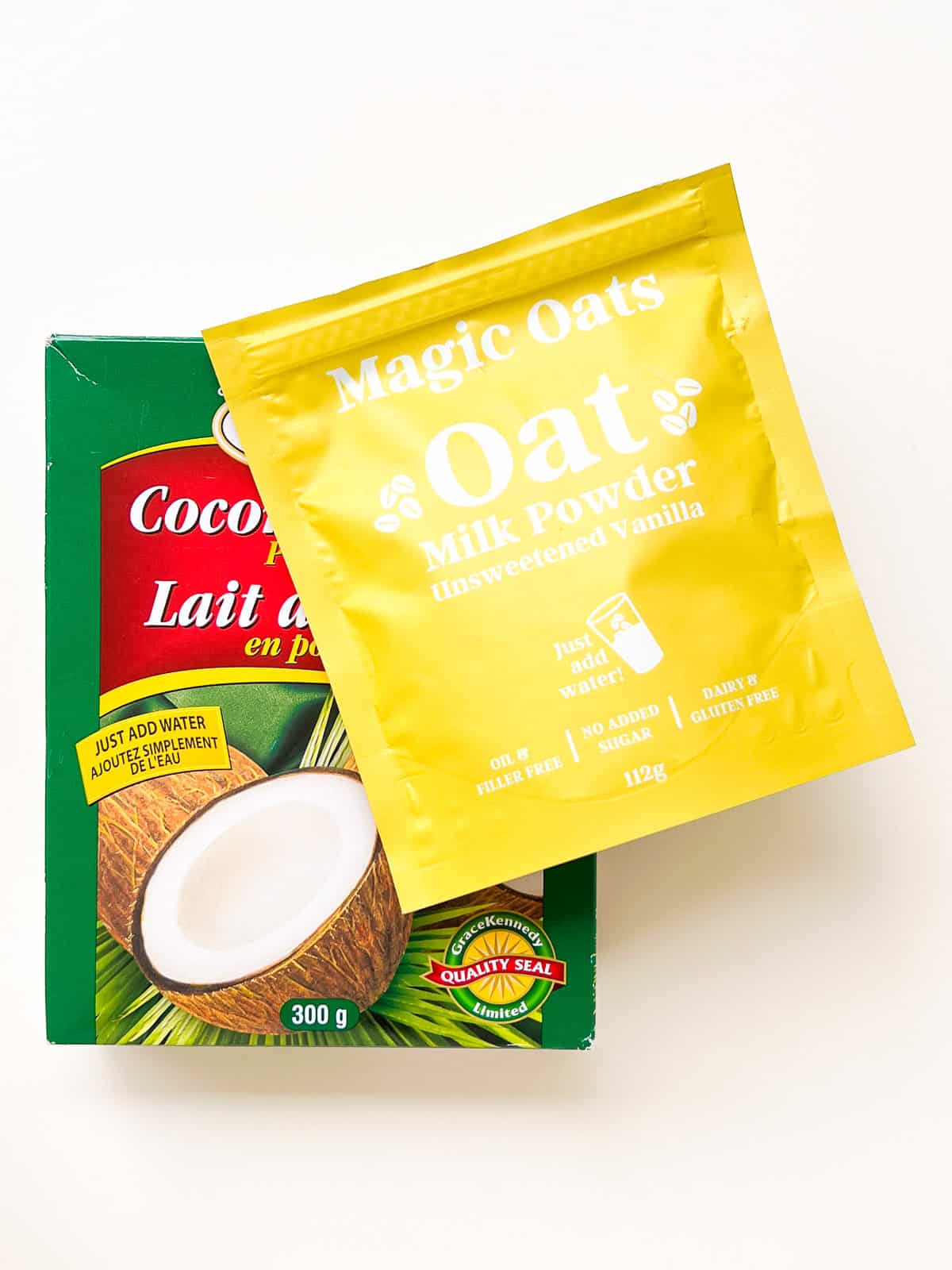
Powdered milks
Backcountry campers are undoubtedly familiar with powdered milk. For front country camping, car camping, glamping, and day hikes, powdered milk may not be on the radar. Powdered milk is ideal because it does not have to be kept in a cooler, and doesn’t take up much space or add weight to your supplies. In most cases, the powdered milk can simply be added to a container and shaken or stirred vigorously to create the resulting 'milk'; I do keep a mini whisk in my outdoor kitchen kit to incorporate the powder more fully when needed.
These days there are multiple varieties of powdered milk available that can suit any type of diet. I most often use oat milk powder, and have used soy milk powder, full fat or skim dairy milk powder, buttermilk powder, and coconut milk powder. Many of these milk powders can be found at bulk food stores and health food stores.
Ways to use powdered milks
- Oat and soy milk: coffee, tea, hot chocolate, cereal, oatmeal, pancakes, desserts
- Coconut milk: coconut rice, curries, sauces, desserts
- Buttermilk: pancakes, desserts
- Full fat and skim dairy milk: coffee, tea, hot chocolate, cereal, oatmeal, pancakes, desserts
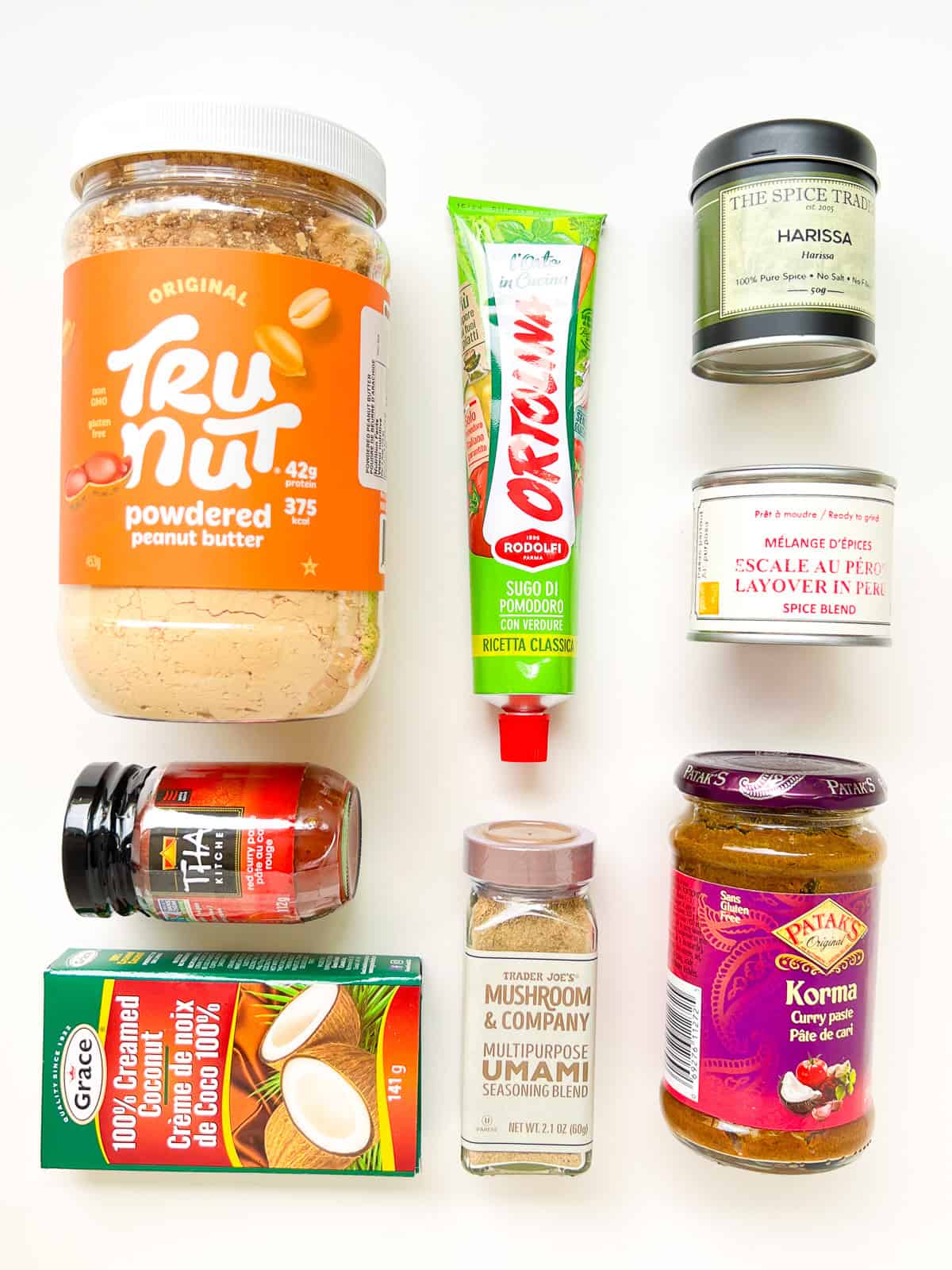
Flavour Enhancers
There are quite possibly a hundred items that could be included as camping meal helpers, so it was indeed hard to narrow it down to a select few choices. When I’m camping, despite the sometimes prodigious amount of things I bring with me, even to walk in campsites (ahem), I do try to make wise choices about just how many spices, condiments, and seasonings I bring. With this in mind, flavour enhancers that can be used in multiple meals, are premixed - saving me from portioning out too many individual spices, or otherwise readily help to make a meal easier and more delicious are on my go-to list.
Ways to use flavour enhancers
- Powdered peanut butter: stir into oatmeal, or use as the base for a quick peanut sauce for noodles and tofu
- Thai and Indian spice pastes: use as is for a marinade, or combined with solid coconut cream or coconut milk powder to make a base for a noodle soup, curry, or sauce for a rice bowl
- Solid creamed coconut: melts when heated, and useful for curries, dessert sauces, peanut sauces, rice, and noodles
- Tomato concentrate: I am especially fond of tomato and vegetable concentrate sold in a tube, meaning no can opening, to add to anything from rice, to pasta sauces, to stews, to beans
- Spice mixes: a spice mix can make or break a meal, so quality spice mixes are my go to for grilling vegetables, making pan sauces by adding butter or olive oil, tossing with steamed vegetables, or using as a flavour based for rice, tofu, beans, or noodles

Cooked bean pouches
As a plant based eater I eat a lot of beans! And while of course canned beans are readily available, a heavy can that has to be opened with a can opener is not quite the ticket for many camping situations. I find that cooked beans don’t keep especially well either in a cooler, meaning that portioning cooked beans from home is not the best plan unless the beans are being eaten within a day or two.
Luckily, shelf stable, vacuum sealed pouches of cooked, plain, and pre-seasoned beans are becoming increasingly available at a variety of merchants. Often these pouches contain a lesser amount than a can, which is useful when feeding smaller groups, or when you just don’t need a full can. Of course, you can always use multiple smaller packets when you do need more! The empty packets are easy to rinse out and are less heavy than cans when you have to pack up and carry your camp waste to a disposal location.
I have found these useful bean packs in Turkish grocery stores, health foods stores, and a few well stocked larger supermarkets. Whenever I see them, I grab a few knowing that the packs will last for ages in my pantry and be useful in a variety of situations either out and about or at home.
Ways to use pre cooked bean pouches
- Heat and serve with rice or other grains, salad, or steamed vegetables, avocado, and hot sauce
- Combine with cheese (dairy or vegan) in a quesadilla
- Smashed into refried beans, to scoop up with salsa and tortilla chips
- Combine with cut up peppers, corn kernels, sliced grape tomatoes, feta, fresh cilantro, jalapenos, and seasonings to make an easy street corn inspired bean and corn salad
- Heat and serve with fried eggs on top, and toast or tortillas
- For campfire nachos, with cheese and salsa, and other fixings of your choice
- Toss with prepared couscous, spices, and fresh vegetables for a salad bowl

Shelf Stable Tofu
Plant based eaters, don’t despair, you can take tofu with you! Standard refrigerated tofu is also something I don’t find keeps very well in a cooler for more than a few days, so shelf stable tofu is the answer. I love these little UHT packed tofu containers because I don’t have to keep them in a cooler. In addition, the packaged amount is an ideal portion for a meal for a few people, as I am personally only usually cooking for 2 or 3 eaters. Of course you can use multiple packs if you need to!
It's worth noting that this style of tofu is silken, meaning it is very smooth, and much more delicate than other tofu varieties. Silken tofu varieties, even the firm and extra firm varieties, require more careful handling, and are best suited for soups, stews, simmering, and pan frying in larger slices.
Ways to use shelf stable tofu
- Add to a hot broth with noodles and vegetables
- Simmer in an asian inspired sauce, such as teriyaki, gochujang, or korean style bbq sauce, and serve over noodles or rice
- Add to a rice or noodle bowl with cooked vegetables and peanut or other sauces
- In tofu scrambler for a breakfast plate or breakfast burrito
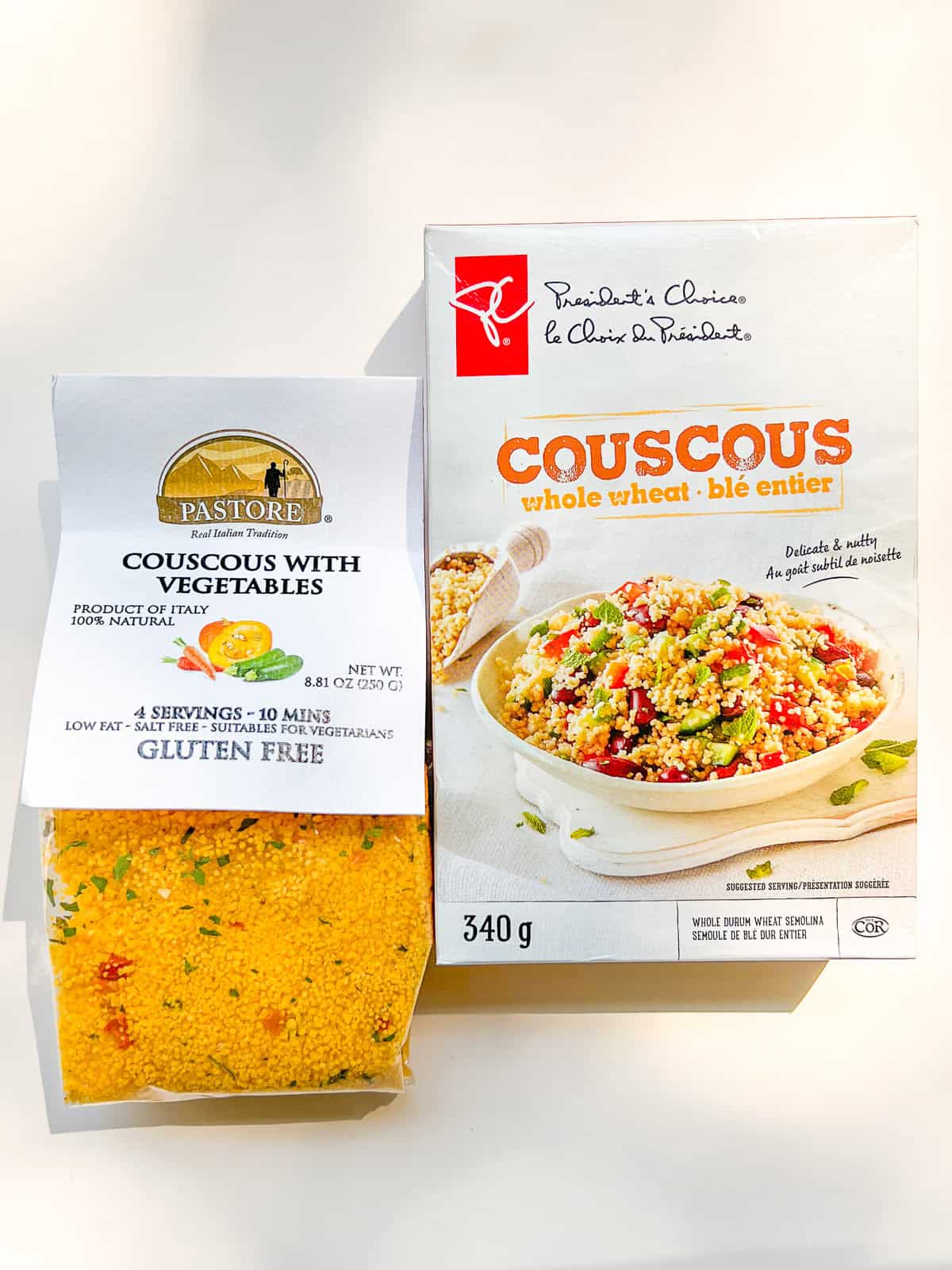
Couscous
Couscous is a category unto its own, a fantastic time saver and wonderful meal base for a camp meal. Technically a kind of tiny pasta, couscous doesn’t actually have to be cooked over heat itself, only needing to be mixed with the same amount of just boiled water, covered for about ten minutes, and then fluffed with a fork. If I am making plain couscous, I always add broth powder or a bouillon cube to enhance flavour and seasoning, or I use one of the many pre seasoned mixes available. Because couscous is essentially a hands off meal component, you have time to make another from scratch component for your meal, that is, if you want to!
Ways to eat couscous
- With beans and cut up vegetables - such as chickpeas, sliced green onions, grated carrot, chopped tomatoes, lemon juice and olive oil - for a simple bean and grain salad
- Simply with beans and spices
- As the accompaniment for a curry, stew, or chili
- To serve underneath a lovely pile of spiced, grilled vegetables that have been cooked over an open fire, with lemon and olive oil as a simple dressing

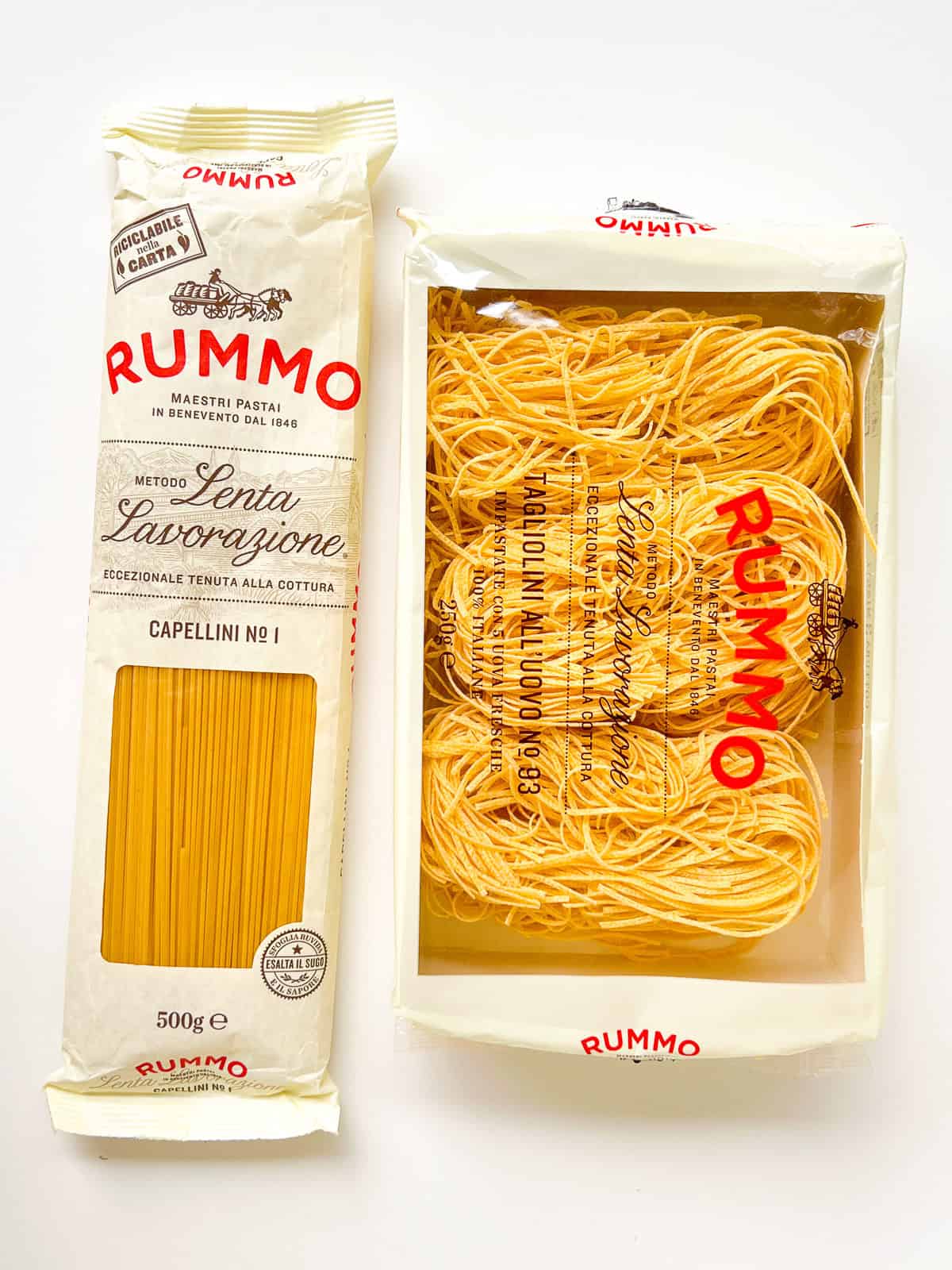
Quick cooking wheat and rice pasta
Not every outdoor cooking situation allows for boiling up a big pot of pasta or noodles like you might do at home. A big enough pot and a large quantity of water are needed for that, and many types of pasta cook for 8, 10 or even 12 minutes, using up quite a bit of cooking fuel. If you do have a moderately sized pot, and a few cups of cooking water, then quick cooking noodles are a great solution to satisfy a pasta or noodle craving.
Some rice noodles, such as thin white or brown rice noodles, cook up in as little as two minutes, and many other kinds of asian style wheat noodles, such as those found in and similar to ramen packs, cook up in about four minutes or so.
If Italian style pasta is on the menu, there are a few varieties of pasta available, such as tagliolini and capellini, that cook up in just a few minutes. This kind of pasta can be cooked in less water than you might think, and a bit of that extra starchy pasta water, if reserved before the noodles are drained, goes a long way to making any sauce you later add silky and more viscous.
Ways to eat quick cooking rice and wheat noodles
- Make a quick noodle soup, using broth or bouillon concentrate, and adding sliced vegetables, such as snap peas, carrots, cabbage and green onions, and tofu cubes and any other garnishes of your choice (such as dried furikake, gomashio, sesame seeds, sliced green onions, etc.)
- Cooked and drained for a noodle bowl, adding steamed or grilled vegetables, such as broccoli, bok choy, onions, sweet potatoes, or green beans, chopped raw vegetables such as carrots, peppers and green onions, and grilled tofu basted with teriyaki, gochujang, or korean style bbq sauce
- Tossed with peanut sauce and cooked or raw vegetables of your choice
- Eat cooked, tossed with sauce of your choice, and topped with a fried egg
Ways to eat quick cooking pasta
- Make a pan sauce with butter or olive oil, garlic, cooked dark greens, parmesan or goat cheese
- Toss with pre prepared basil or sundried tomato pesto and chopped fresh tomatoes
- Tossed with parmesan and cracked black pepper, fried egg on top optional
- Tossed with grilled vegetables that have been cooked over an open fire, and topped some shredded fresh mozzarella or a nice portion of burrata, and olive oil
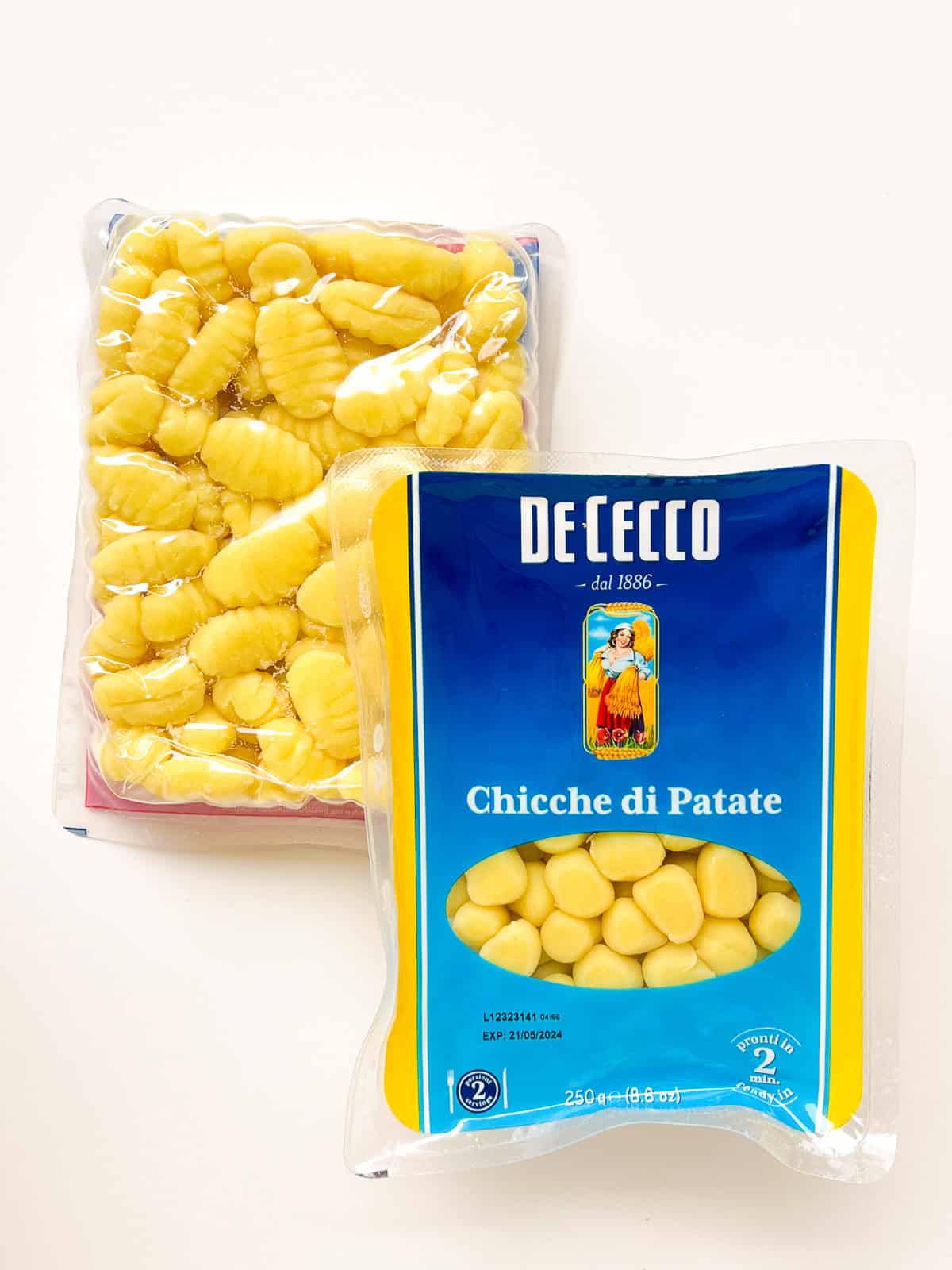
Gnocchi
Another quick cooking pasta is gnocchi! While gnocchi might not immediately come to mind when planning camping meals, pre-made gnocchi is packaged in shelf stable containers making it a great contender for outdoor cooking. Gnocchi cooks up in boiling water in as little as 3 or 4 minutes, and can also be pan fried, eliminating the need for water entirely.
In my favourite camping gnocchi dish, I use a hybrid method where I use a fry pan, add a cup or two of water, and let the gnocchi boil for a few minutes. Once the water evaporates, I add some olive oil and pan fry the gnocchi before adding sauce and other toppings. I especially love the little, mini gnocchi, called “chicche di patate” that can be found at many Italian grocers.
Ways to eat gnocchi
- Try my recipe for Smoky Gnocchi with Spinach and Goat Cheese
- Toss with prepared basil or sun dried tomato pesto, and top with parmesan
- Toss with butter and freshly chopped herbs
- Add into a soup or stew as a makeshift dumpling
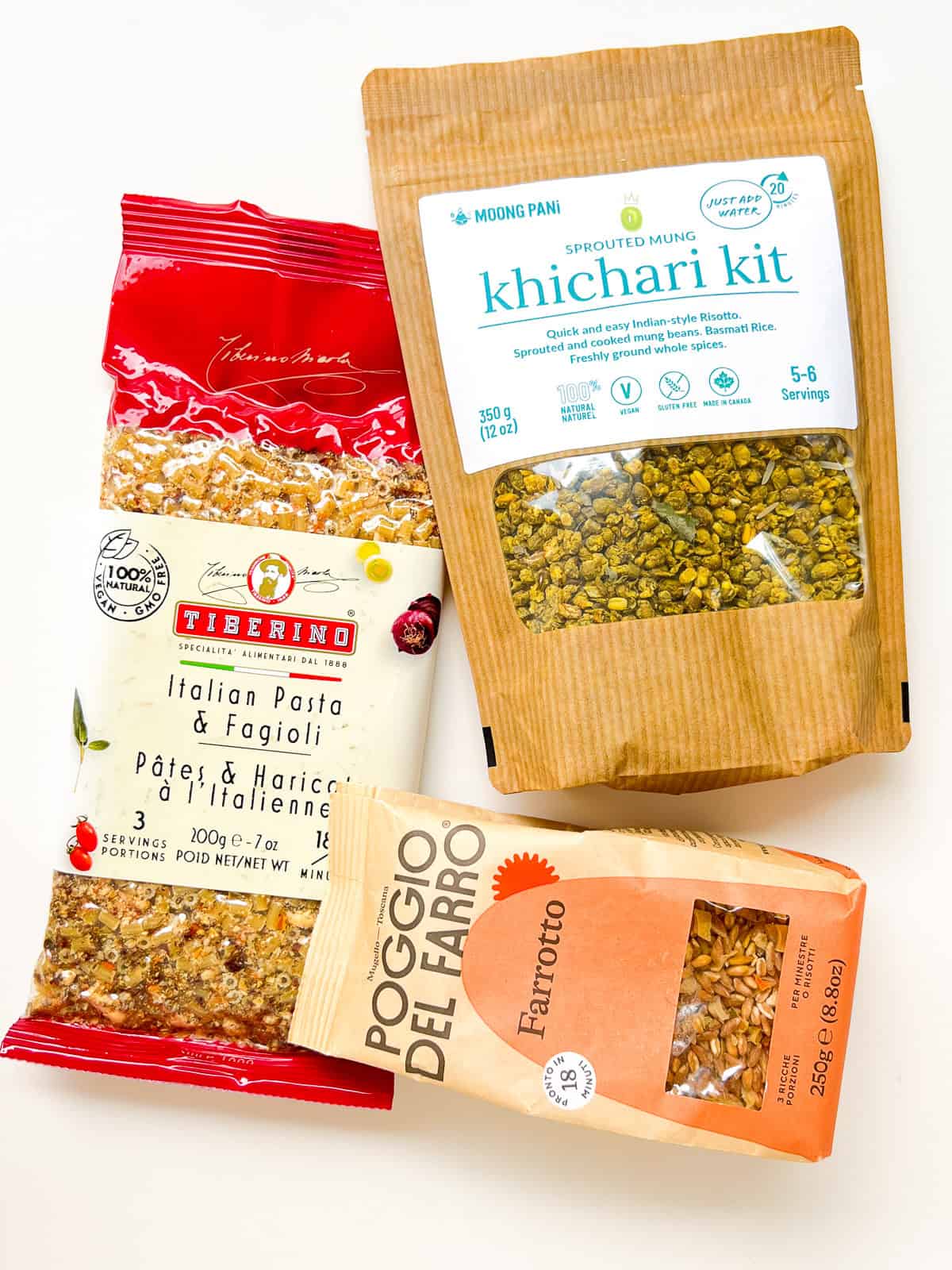
Longer cooking rice, grain, and bean mixes
If a one pot meal is on the menu, and you have the fuel or firewood to spare, longer cooking rice, grain, and bean mixes with seasonings already incorporated are a useful and tasty camping meal base. The varieties I tend to use cook up in about 18-20 minutes and only require water and a little bit of stirring now and then to cook. Because these mixes are almost entirely hands off, I can choose to cook other components to add to my meal, incorporate leftovers from a prior meal, or add some simple fresh toppings to enhance the meal.
Ways to eat rice, grain, and bean mixes
- For indian style rice and pulse mixes, add chopped tomatoes, plain yogurt, and chutney
- For Italian style farro soups, “farrottos” (risotto style farro), or bean and pasta soups/stews, add cooked beans or leftover cooked vegetables folded in at the end, or top with fresh arugula, grated parmesan, or goat cheese
- Add a healthy portion of spinach or other dark greens like chard or collards into the mix while it is cooking, so the vegetables are tender at the end of the cooking time, and making a more substantial and filling meal out of the mix

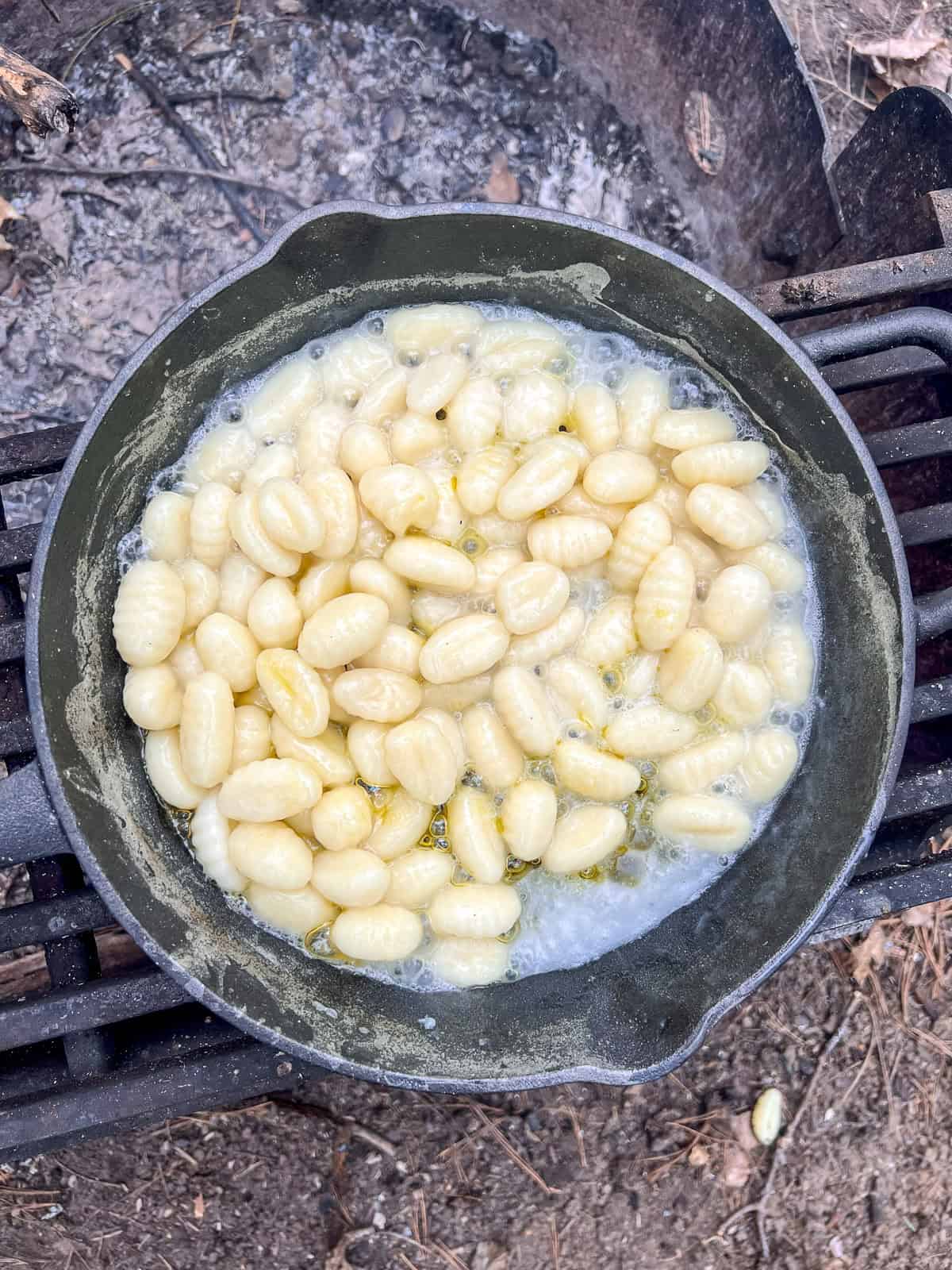
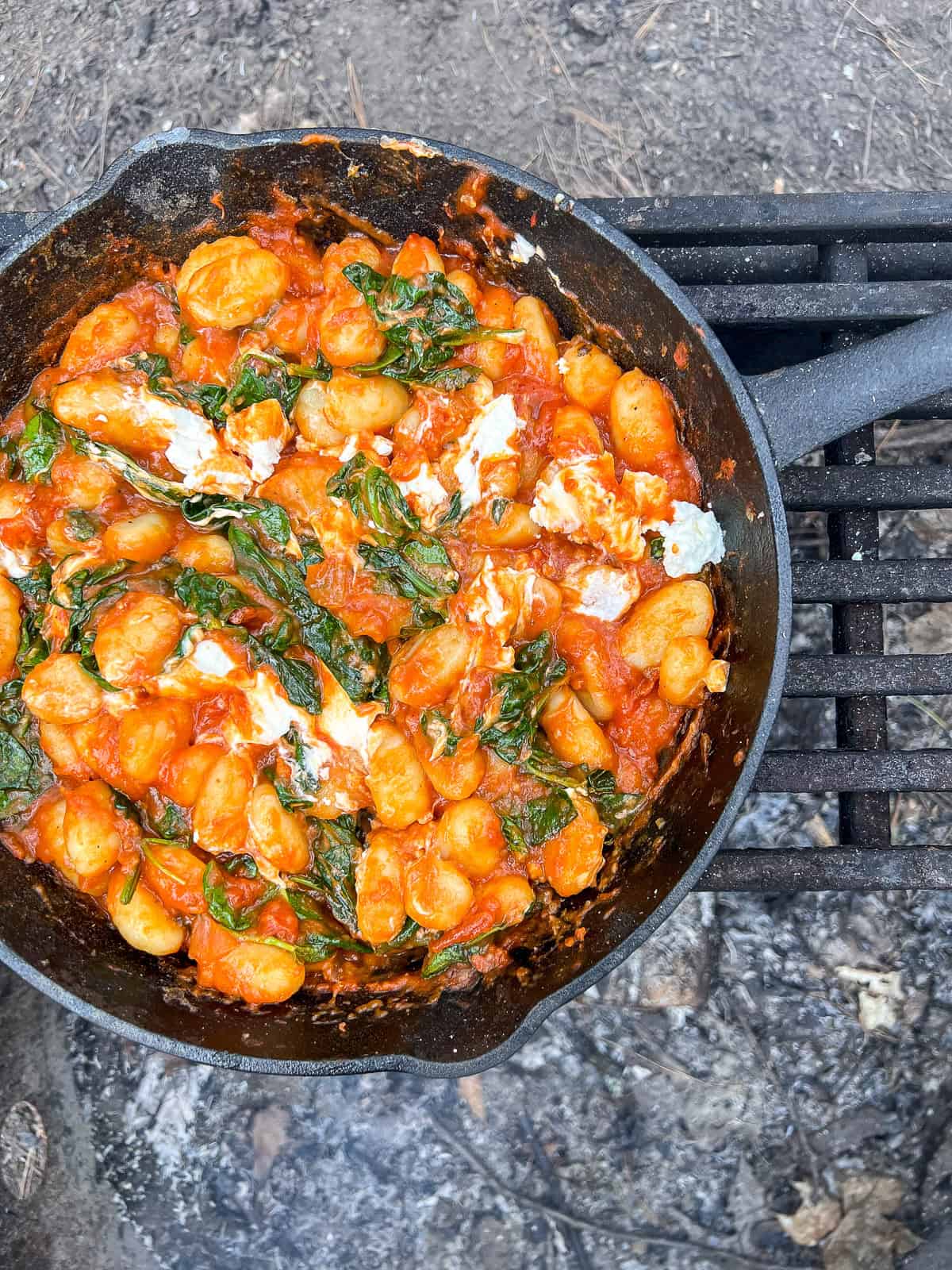
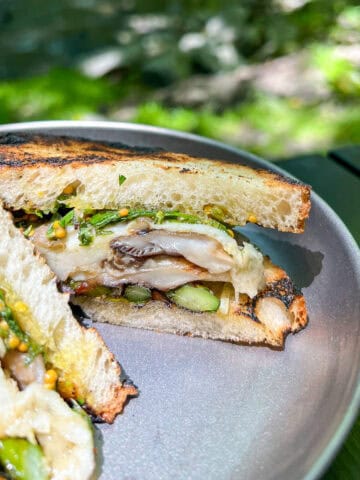

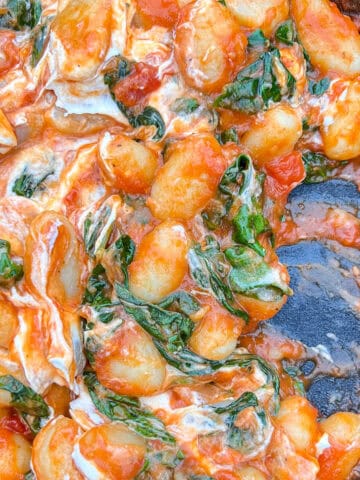
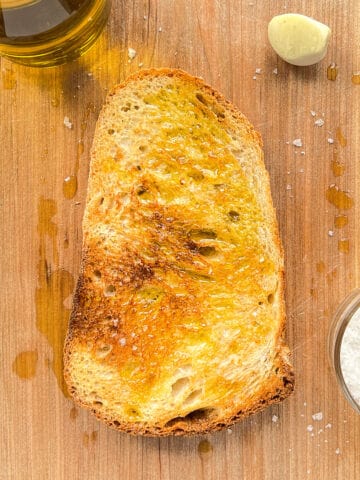
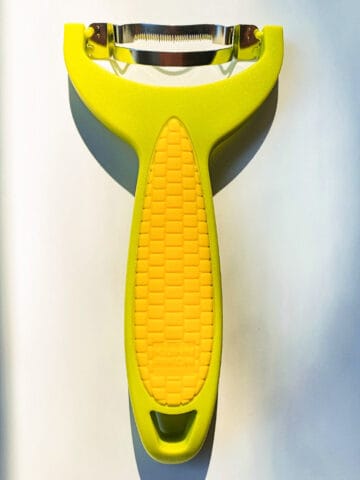
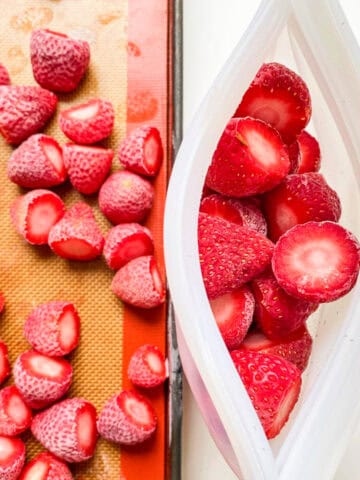

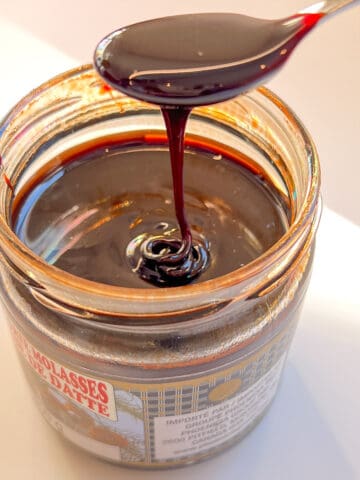
Leave a Reply